Tower poppies planted at Liverpool's St George's Hall
- Published
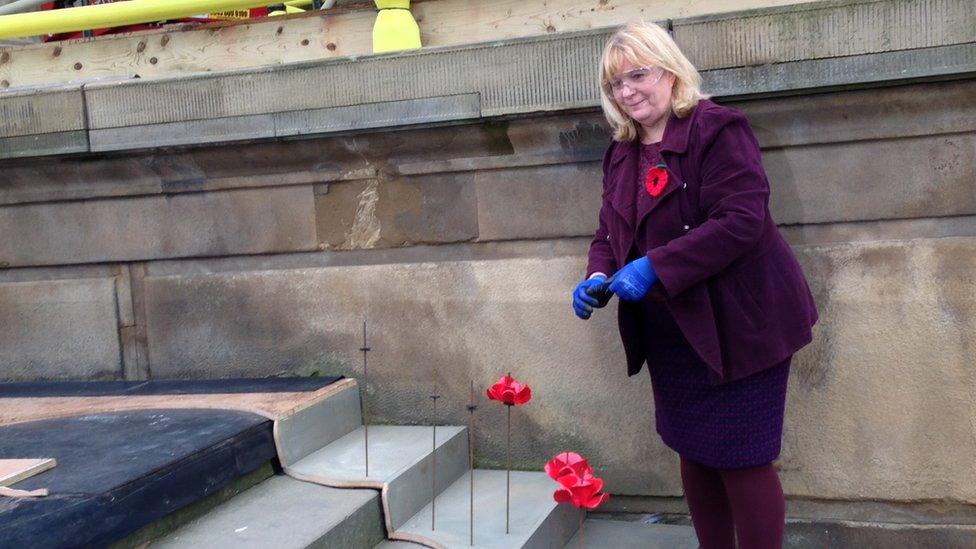
Assistant Mayor Wendy Simon planted the first poppies at St George's Hall
The first of thousands of ceramic poppies used in the Tower of London art installation have been "planted" in Liverpool.
The cascade - or Weeping Window - section will be draped down St George's Hall before opening to the public on Saturday ahead of Remembrance Sunday.
The installation, which marked 100 years since the start of World War One, drew more than five million visitors.
The poppies will be on display in Liverpool until January.
Updates on this story and more from Merseyside
Assistant Mayor Wendy Simon planted the first poppies at the venue, where thousands of men signed up to fight in World War One in 1914.
She said the exhibit was "really important" for the city, "for us to remember, for young and old to come together, to reflect and to really think about what people sacrificed so we can live in the freedom and democracy we have today".

Poppies come to Liverpool
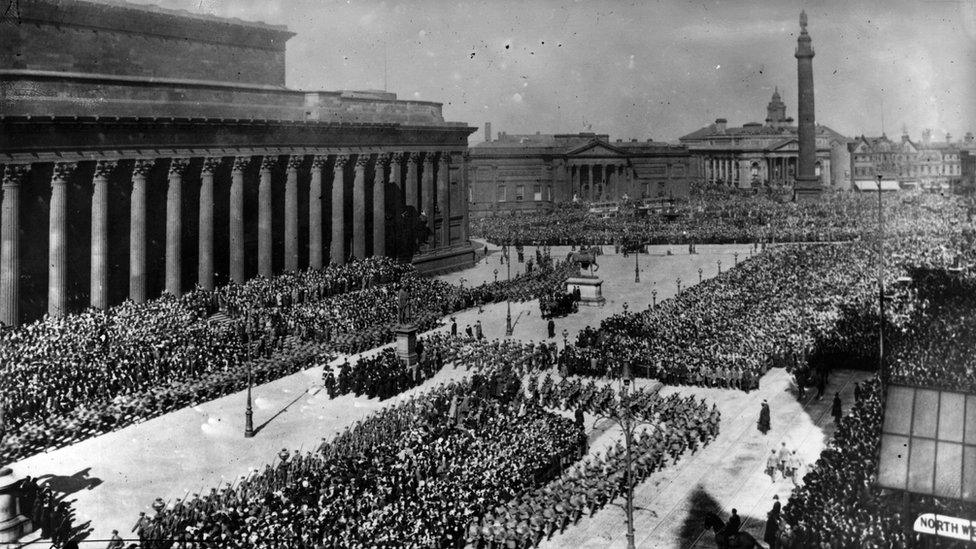
About 12,000 soldiers paraded outside St George's Hall in March 1915
St George's Hall was constructed between 1842 and 1856
A month after WW1 broke out, thousands of men packed onto St George's plateau volunteering to join Pals batallions
By September 1914, more than 30,000 men had enlisted at St George's Hall
The plateau also features the Liverpool Cenotaph, established in 1927, erected as a memorial to those who fell in WW1
More than 13,000 men from Merseyside died in the conflict
A popular focal point, St George's Hall is where thousands gathered after the deaths of John Lennon and George Harrison and for the launch of the European Capital of Culture bid in 2008, external
About 40,000 visited the Grandmother Giant inside the hall in 2014 when massive puppets were used to mark the conflict's centenary.

Created by artists Paul Cummins and Tom Piper, the artwork was named Blood Swept Lands and Seas of Red after a line written by a soldier who died in Belgium.
Each of the 888,246 poppies in the Tower of London display represented each death in the British and Colonial forces between 1914 and 1918.
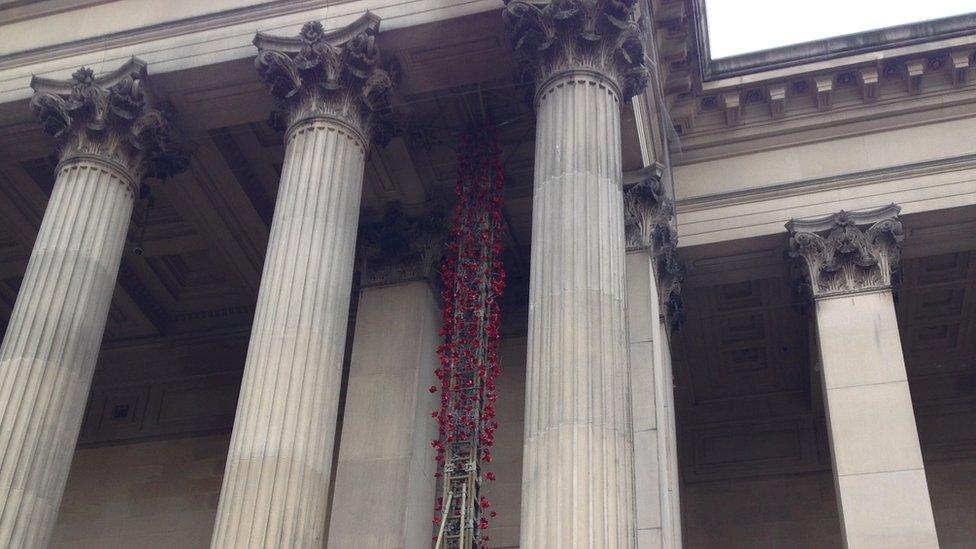
Thousands of ceramic poppies will drape down St George's Hall
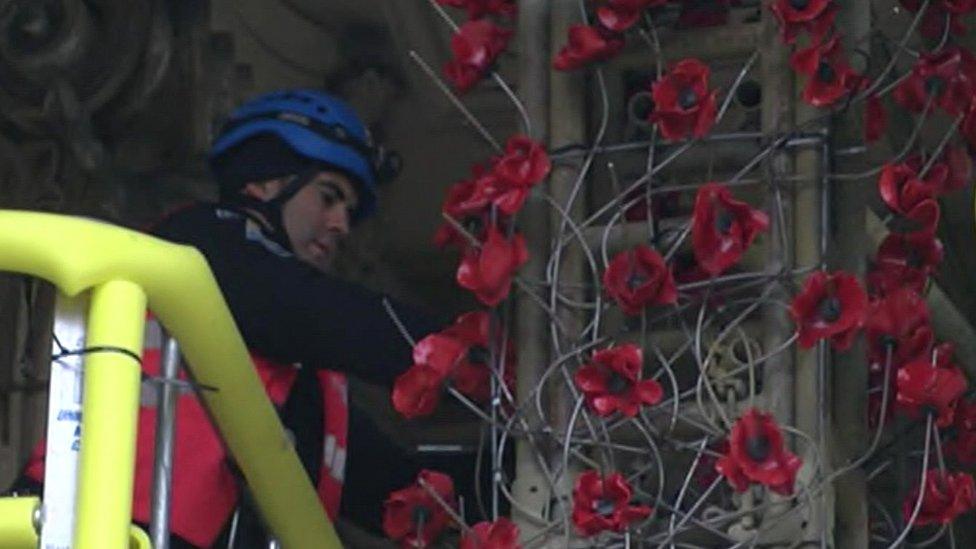
The display will be put up over the next few days before opening to the public on Saturday
About £9m was raised for military charities after most of the poppies were sold to the public but two sections - the Wave and the Weeping Window - were bought for the nation by the charities Backstage Trust and the Clore Duffield Foundation.
Both sections will be exhibited at various venues across the UK before they are permanently housed at the Imperial War Museums in London and Manchester after 2018.
- Published3 November 2015
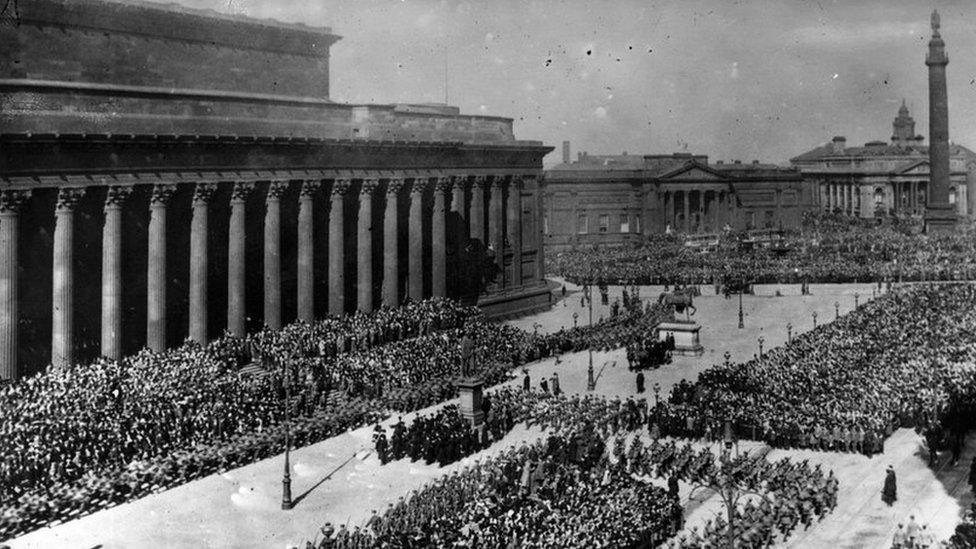
- Published31 October 2015
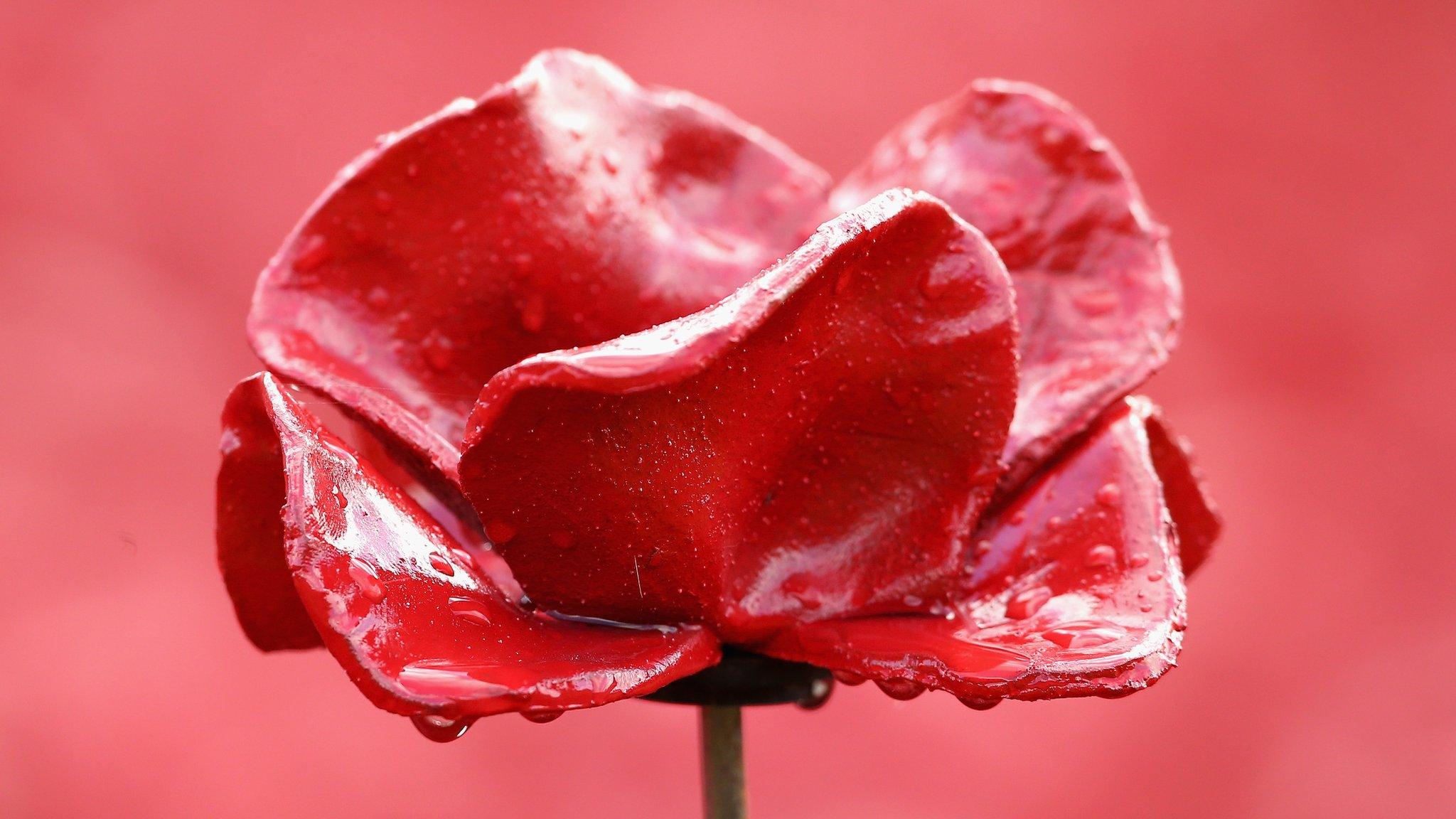
- Published1 November 2015
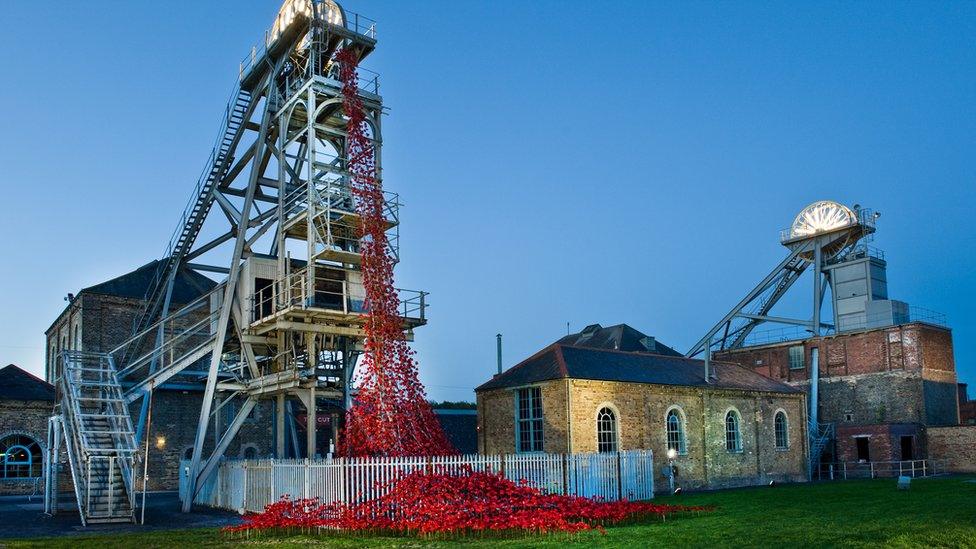
- Published19 October 2015
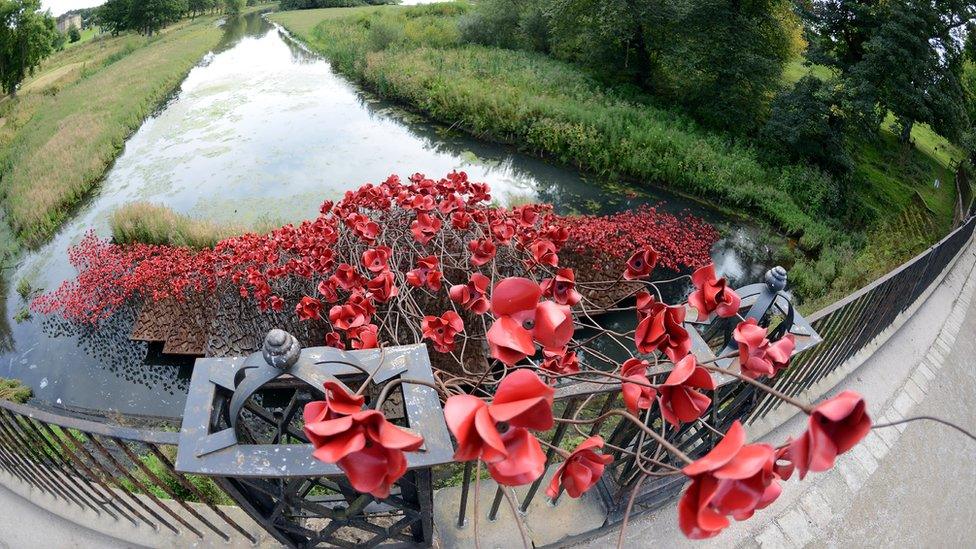
- Published11 September 2015
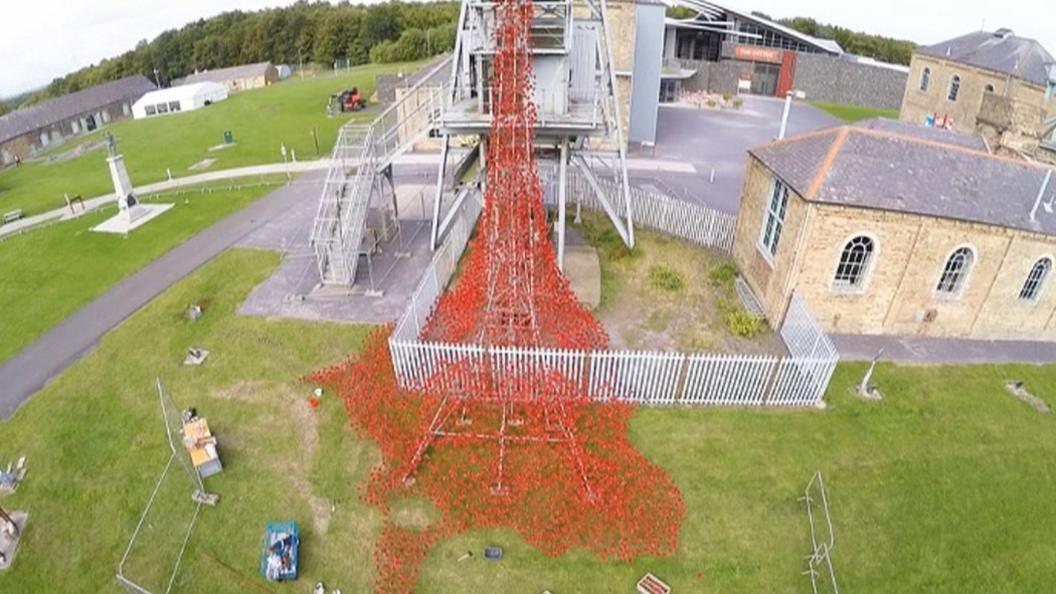
- Published30 July 2015
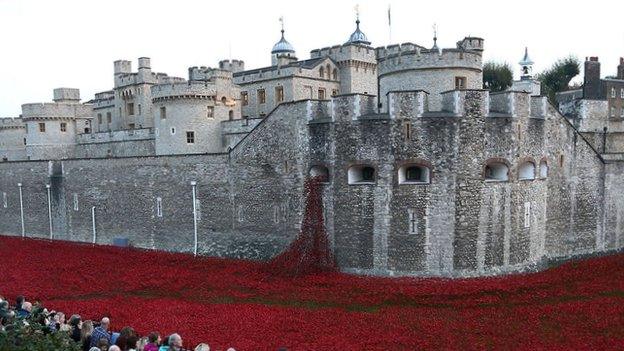
- Published5 August 2014
